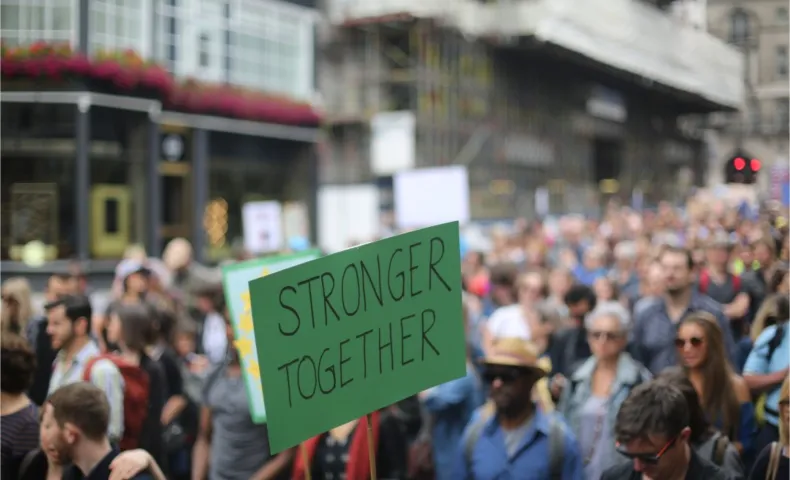
Building a “Bigger We”
Every four years, there’s feverish energy to build coalitions that can win an election. Time and again, we’re reminded that presidential elections—and all elections—come down to how you broaden your base of support and how you bring people together across race, age, geography, ideology, and interests. But partnerships and alliances are not just relevant in the political arena; they are also crucial when it comes to advancing equality and justice.
At the Haas, Jr. Fund, we often talk about building a “bigger we.” Bringing people, groups, and sectors together and finding common purpose have long been part of the Haas Jr. DNA.
- It’s the reason we have worked for more than a decade to support groups in key regions of California to come together across issues to promote civic engagement among economically marginalized communities, immigrants, and other underrepresented groups.
- It’s why we’ve worked with higher education institutions, student groups, and immigrant rights organizations to expand opportunities and protections for undocumented students in California.
- It’s why we have steadfastly supported coalition groups like the California Immigrant Policy Center and Asian Pacific Environmental Network, which are working in deep partnership with community leaders and activists, to advocate for immigrant, refugee, and environmental justice.
Time and time again, we’ve seen the magic that happens when people cross race or neighborhood lines, understand one another more deeply, see their common fate, and realize they are stronger in reaching their goals when working together.
Philanthropy To Dos
In this edition of the Haas Jr. newsletter, we spotlight some of the alliances we are supporting today across our programs. As I reflect on these stories, a few things stand out about how we and other funders can best support groups to do collaborative work:
- Give groups the bandwidth to be good partners. Unwittingly or not, foundations can create incentives for groups to go it alone—for example, by encouraging groups to compete with each other for funding through RFPs or take sole credit for wins. Being aware of how money can support collaboration or stymie it is critical.
- Support both coalitions and their members. Nonprofits need philanthropic support to carry out their individual and collective work. And coalitions need support too—for communications, staffing, and other needs. It’s a both/and strategy to supporting collective success.
- Remember that trust is key to partnerships. A common refrain in our interviews with coalition leaders is that it takes time to build trust across organizations that want to work together. Demanding or expecting immediate results is counterproductive; we need to give coalitions time and space for trust building, agenda setting, and relationship building. And we should resist the temptation to expect big wins right out of the gate. In fact, as Rebecca Shi at the American Business Immigration Council notes, small wins can help a coalition gel on the way to ever-increasing support and impact over time. That said, I’m continually surprised at how quickly impact happens after groups build the trust to join forces.
- Help groups connect but don’t force any dates much less marriages. Funders are sometimes in a position to see commonalities among and across organizations we support, even if they are coming at an issue from very different perspectives. Leaders often ask us to introduce them to unlikely ally groups, and we can help two or more groups connect around shared strategies or goals. At the same time, it’s important to recognize that there are many dynamics and nuances at play that we won’t be able to know from our faraway vantage point. So, the key in this work is to facilitate connections with a light touch—not with a heavy-handed suggestion that people collaborate but just to make introductions and let them take it from there. Amado Uno at Million Voters Project reminds funders to learn about the regional and state power-building ecosystem in order to be effective.
- Support partnerships of all kinds. At Haas Jr., we have supported nonprofits to engage in formal and informal partnerships, short-and long-term alliances, joint campaigns, and even organizational mergers like the Positive Coaching Alliance story we showcase in this newsletter. Again, the key is to trust nonprofits to find the best collaborative solutions for them, and then to support them to make the most of joining together.
With so much polarization in the country today, the alliances we are working with at Haas Jr. give me hope. They are showing it’s possible to bring diverse people and organizations together, build trust, create understanding across differences, and create a better, more just, and more cohesive world. I find strength in the fact that we are more alike than different and that a “bigger we” is indeed possible.
Thank you,
Cathy
